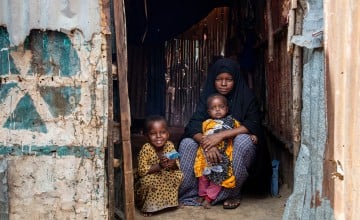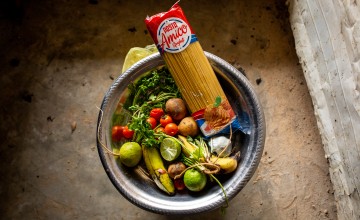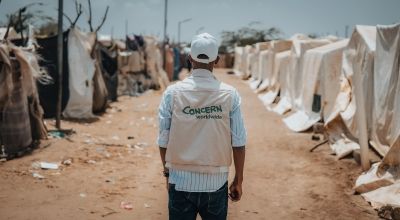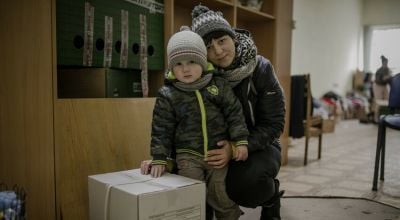
Knowledge Hub
Somalia is currently going through its worst drought in over forty years. Following a fifth failed rainy season, the drought threatens a hunger crisis that could lead to the mass starvation of millions of people.
In 2011, over 250,000 Somali people were killed by drought induced famine, with half of the dead being children. However, despite recently avoiding an official declaration of famine, the current drought in Somalia is likely to worsen and threaten a substantially larger amount of people.
The reasons behind the current crisis are multifaceted. Five consecutive failed rainy seasons aggravated by climate change has driven the ongoing drought, but years of locust infestations, Covid-19, political instability, as well as the effects of the Ukraine conflict on international food prices have further exasperated the country’s ability to ward off crisis.
The drought and locust infestations have destroyed farms and pastoral land, leading to total crop failures and the death of more than three million livestock across the country and a near halt of agricultural production in some regions. The current hunger crisis has resulted in 7.1 million people in Somalia not meeting their daily food requirements. Without international action this number is very likely to rise, resulting in more deaths and devastation.

Poverty and hunger in Somalia
Somalia is one of the poorest countries in Africa. Nearly 70% of the population live below the international poverty line (defined as earning less than $2.15 a day), with numbers being higher in rural areas among nomadic pastoralists.
Around 1.8 million children are acutely malnourished. Between January and November 2022, at least 1,049 children died in health centres and hospitals due to hunger-related causes, with many more dying unrecorded.
Malnutrition needs to be quickly acted upon not only to increase an affected person’s survivability, but because hunger experienced in the first two years of a child’s life can have profoundly negative and permanent effects on their physical growth and intellectual development as they grow up. Adults who survive childhood malnutrition have a higher likelihood of being shorter, underweight and having weaker bone and muscle density, as well as achieving poorer academic attainment.
Pregnant women are especially vulnerable to hunger, as the risks of developing anaemia and fatal birthing outcomes for both mother and baby increase considerably. There is also a cyclical component of hunger, with parents who suffered extreme hunger earlier in life, often being unable to leave those conditions and becoming more likely to have children who are malnourished and impoverished.
Abdi-Rashid Haji Nur, our Country Director in Somalia joined Concern Worldwide in 1992 when Concern was responding to the 1991/92 famine. Having worked with Concern for over 30 years and being Somali himself, Abdi-Rashid has seen the effects of rising food prices in Somalia. Abdi-Rashid is acutely aware of the precarious situation regarding food pricing in Somalia, especially as Somalia is very dependent on imports. Somalia imports 90% of its wheat from Russia and Ukraine and the conflict has sent prices skyrocketing. Abdi-Rashid observes that, “Somalia is one of the worst hit by the global trends of not only fuel, but also rising food prices there…A 50 kg bag of sorghum is now $50, and it was $8 at the end of 2021. That is 50 kg of sorghum, which most people in rural areas depend on.”

Socioeconomic effects of the drought in Somalia
For many decades, Somalia has had to contend with an underfunded infrastructure and extreme poverty. This recent famine has placed another burden on the shoulders of an already fatigued infrastructure and has manifested itself in difficult societal challenges.
A combination of drought, political instability and conflict have led to an estimated 1.3 million Somalis being displaced throughout the country. Millions of people, pushed into further impoverishment, are leaving their rural communities in search of food and water, often into cities and internally displaced communities. As many as 1.1 million internally displaced people are facing acute food insecurity, which leads to pressure on local government as they struggle to provide health support as well as employment opportunities to those displaced.
The drought has been particularly hard on farmers, with many losing entire assets in their failed livestock and crops. Poorer farmers are more susceptible to the hardships of famines, often running up high debt burdens as the cost of livestock feed becomes more expensive, and as a consequence of going into further debt to purchase food for their families.


What we’re doing in Somalia
Although famine has been avoided for now, the hunger crisis in Somalia is still posing a threat to millions. With the impact of climate change worsening and many communities at risk of being unable to adapt, Somalia needs further international support to combat future famines.
Somalia is not the only country being affected by severe droughts. Many countries across East Africa have also been impacted by drought and are struggling with ongoing humanitarian crises. Concern's Regional Director for East Africa Amina Abdulla has said, “Our teams are on the ground in Somalia, Ethiopia and Kenya responding, but the resources we currently have are not sufficient to meet the growing numbers of people in need.”
Concern Worldwide has been working in Somalia since 1986 working to alleviate some of the crises the country has faced. We have been responding to this present crisis by supporting 2600 malnourished children per month with Ready to Use Therapeutic Food (RUFT), as well as cash transfers to help people purchase food and essential goods from local vendors. Our Concern staff have been working with local organisations to rehabilitate and perform maintenance on wells, latrines, handwashing stations and boreholes.
Our Somalia Country Director Abdi-Rashid has said that, “People’s support has made a big difference in Somalia already, whether it’s the lifesaving treatment or long term funding for a serious table of programmes there, and I can say that that generosity has saved millions of people previously.”
*Names have been changed to protect the privacy of some of the people featured.
Other ways to help
Donate now
Give a one-off, or a monthly, donation today.
Join an event
From mountain trekking to marathon running, join us for one of our many exciting outdoor events!
Buy a gift
With an extensive range of alternative gifts, we have something to suit everybody.
Leave a gift in your will
Leave the world a better place with a life-changing legacy.
Become a corporate supporter
We partner with a range of organisations that share our passion and the results have been fantastic.
Create your own fundraising event
Raise money for Concern by organising your own charity fundraising event.





